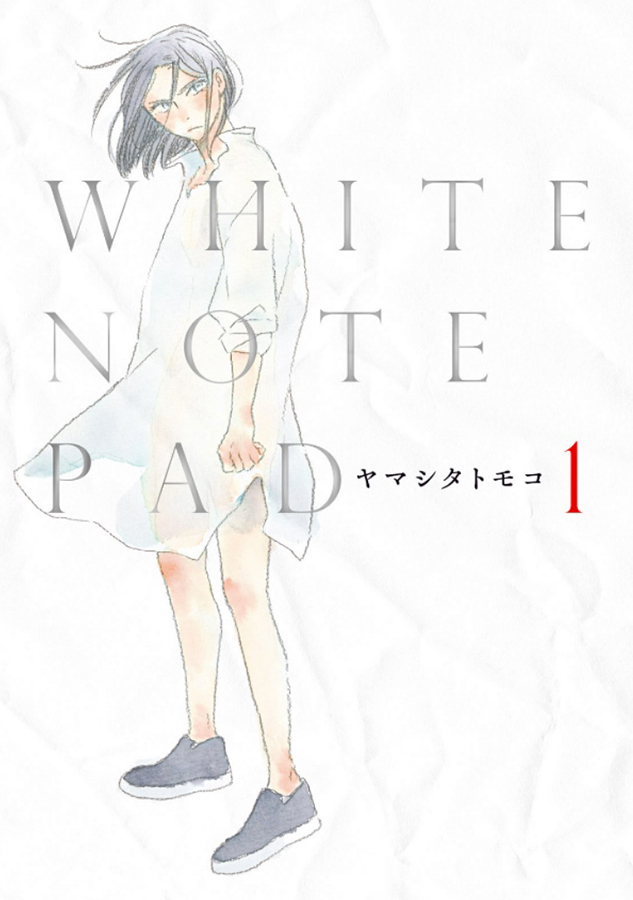 Imagine finding yourself in the body of somebody else, all of a sudden able to explore another person’s life while also being cut off from the life you lead in your ‘old’ body. And finding out the previous ‘owner’ of your current body is now living in your ‘old’ body. Sounds both frightening and kind of exciting, doesn’t it?
Imagine finding yourself in the body of somebody else, all of a sudden able to explore another person’s life while also being cut off from the life you lead in your ‘old’ body. And finding out the previous ‘owner’ of your current body is now living in your ‘old’ body. Sounds both frightening and kind of exciting, doesn’t it? 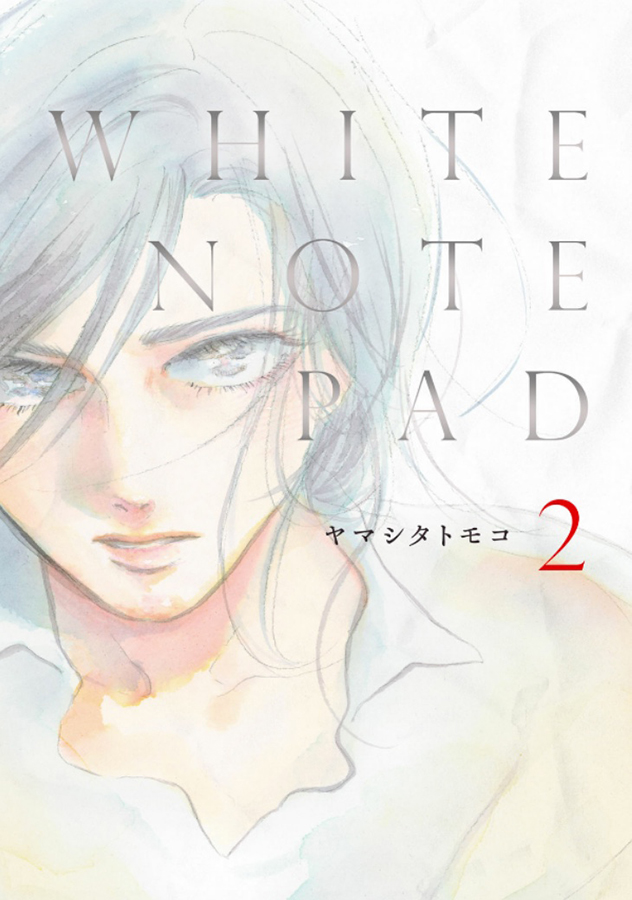
In Yamashita Tomoko’s 2-volume manga WHITE NOTE PAD, two people leading fundamentally different lives have become victims of such a body swap experience caused by supposedly cosmic circumstances: 17-year-old schoolgirl Odamaki Hana and 38-year-old automobile engineer Kine ShÅgo. Now, two years later, they unexpectedly meet each other, their respective old bodies, and have to confront the fact that their old lives are no longer their own and also, that they both are no longer able to live without the other…
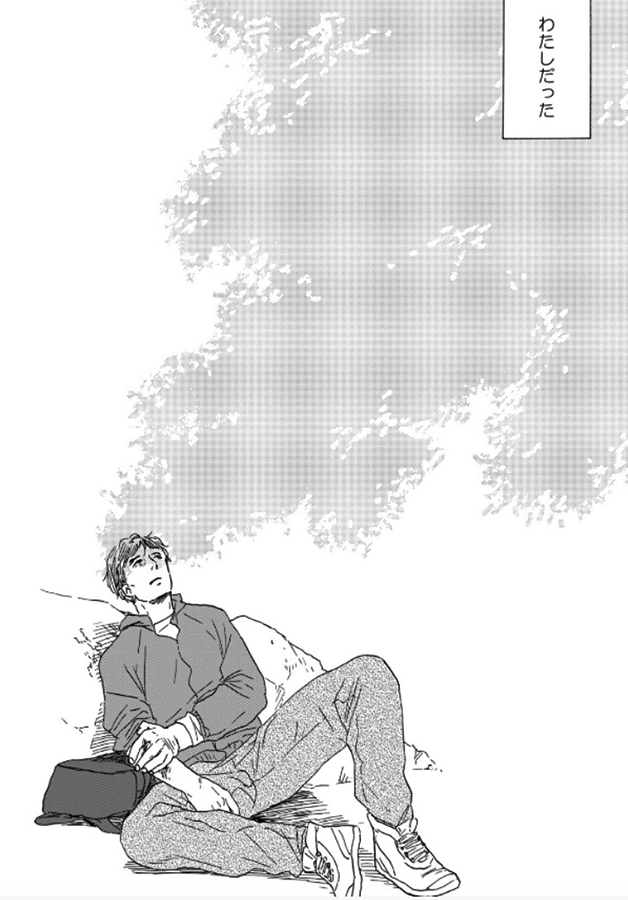 As we soon learn, it is Kine, now in the body of Hana, who seems to have adapted seamlessly to the body switch. He has become a successful model working for a young women’s fashion and lifestyle magazine. After they meet again, he-as-Hana is able to secure Hana, now in the body of Kine, a job as an assistant for the editorial department of the fashion magazine Hana models for. Hana-as-Kine, on the other hand, has had to pretend to suffer from a sudden memory loss as she was understandably unable to function in Kine’s workplace in an automobile factory. She also has to realize that Kine has been living a pretty lonely life with just a small social circle of co-workers and friends, a situation that deteriorates further after Hana-as-Kine has to quit his job. But while she still has the mind of a now 19-year-old girl who used to be rather shy in school, her shoulders always hunched forward, she’s starting to work hard in her new job with her own trademark empathy for the people around her, making friends among the magazine staff and slowly improving the career and even the outward appearance of Kine, her ‘new’ body and identity.
As we soon learn, it is Kine, now in the body of Hana, who seems to have adapted seamlessly to the body switch. He has become a successful model working for a young women’s fashion and lifestyle magazine. After they meet again, he-as-Hana is able to secure Hana, now in the body of Kine, a job as an assistant for the editorial department of the fashion magazine Hana models for. Hana-as-Kine, on the other hand, has had to pretend to suffer from a sudden memory loss as she was understandably unable to function in Kine’s workplace in an automobile factory. She also has to realize that Kine has been living a pretty lonely life with just a small social circle of co-workers and friends, a situation that deteriorates further after Hana-as-Kine has to quit his job. But while she still has the mind of a now 19-year-old girl who used to be rather shy in school, her shoulders always hunched forward, she’s starting to work hard in her new job with her own trademark empathy for the people around her, making friends among the magazine staff and slowly improving the career and even the outward appearance of Kine, her ‘new’ body and identity.
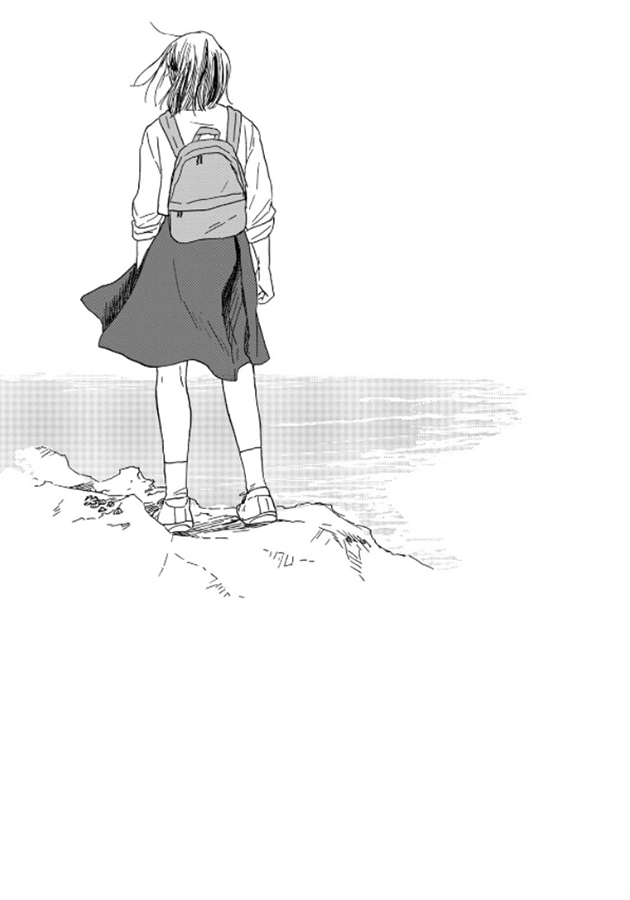 Kine has been enjoying a new-found freedom and excitement as the inhabitant of the body of a young woman. He’s become a little addicted to everyone complimenting him on his body and feels good exposing it, literally posing as Hana – in front of the camera and for the people around him. Eager to explore his sexuality as a young woman, he even starts dating a young co-worker. At the same time, he’s a little careless with the body given to him when it comes to his sexual endeavours, resulting in a change in Hana’s ‘old’ body that will have a huge impact on the way Kine and Hana are linked to each other…
Kine has been enjoying a new-found freedom and excitement as the inhabitant of the body of a young woman. He’s become a little addicted to everyone complimenting him on his body and feels good exposing it, literally posing as Hana – in front of the camera and for the people around him. Eager to explore his sexuality as a young woman, he even starts dating a young co-worker. At the same time, he’s a little careless with the body given to him when it comes to his sexual endeavours, resulting in a change in Hana’s ‘old’ body that will have a huge impact on the way Kine and Hana are linked to each other…
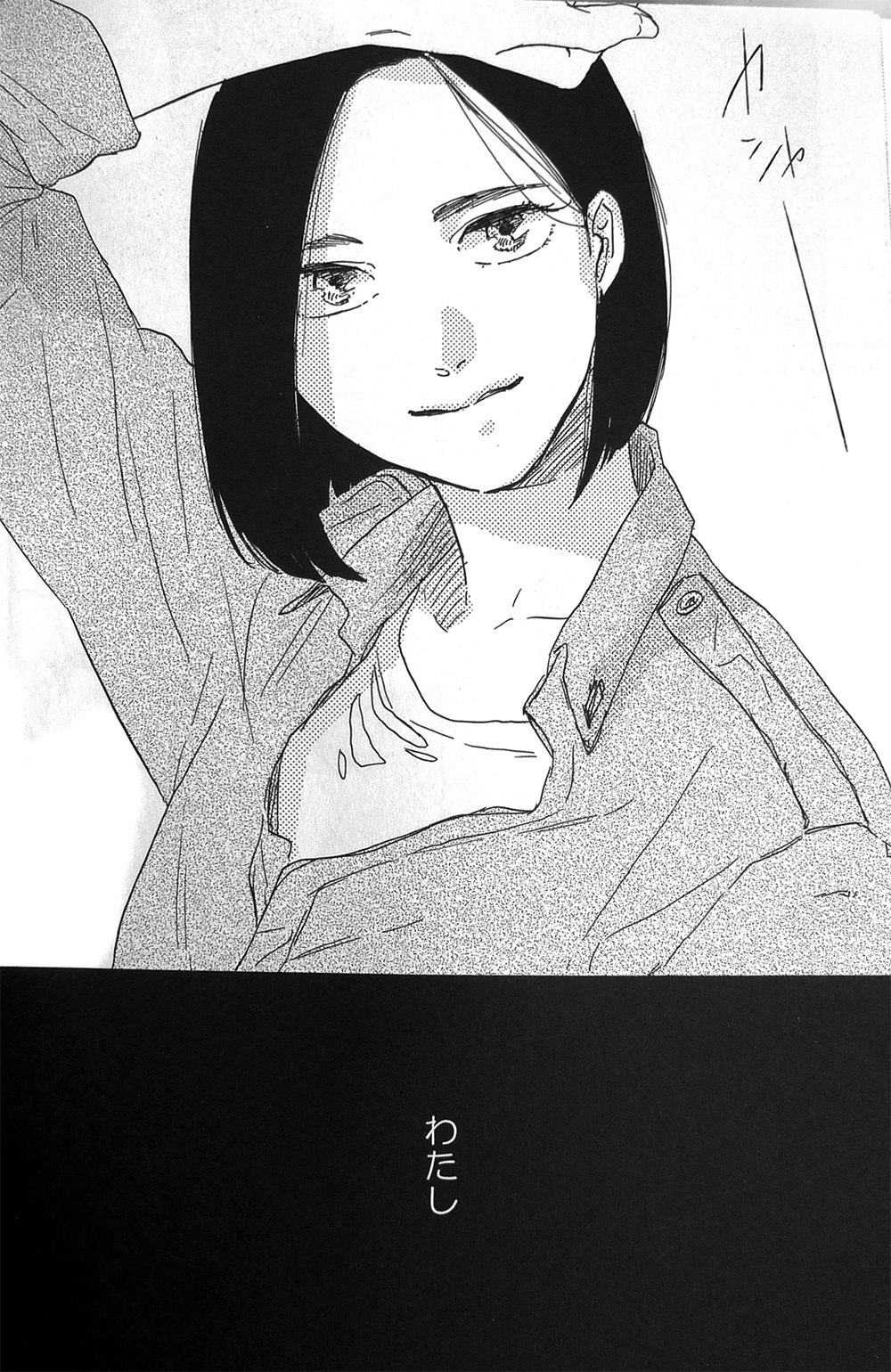 The mastermind behind this intriguing story is Yamashita Tomoko, who enjoys immense popularity as both a Boys’ Love manga artist and a regular contributor to Shodensha’s josei-oriented manga magazine Feel Young, in which this 2-volume manga was serialized. Here, in WHITE NOTE PAD, she uses an interesting time frame: the body switch caused by (super)natural circumstances is mentioned in the beginning as the event that robbed Hana of her old life. But Yamashita leaves the causes and technicalities of that mysterious incident unexplained and her protagonists, while struggling with the body switch itself, seem to accept it as irreversible.
The mastermind behind this intriguing story is Yamashita Tomoko, who enjoys immense popularity as both a Boys’ Love manga artist and a regular contributor to Shodensha’s josei-oriented manga magazine Feel Young, in which this 2-volume manga was serialized. Here, in WHITE NOTE PAD, she uses an interesting time frame: the body switch caused by (super)natural circumstances is mentioned in the beginning as the event that robbed Hana of her old life. But Yamashita leaves the causes and technicalities of that mysterious incident unexplained and her protagonists, while struggling with the body switch itself, seem to accept it as irreversible.
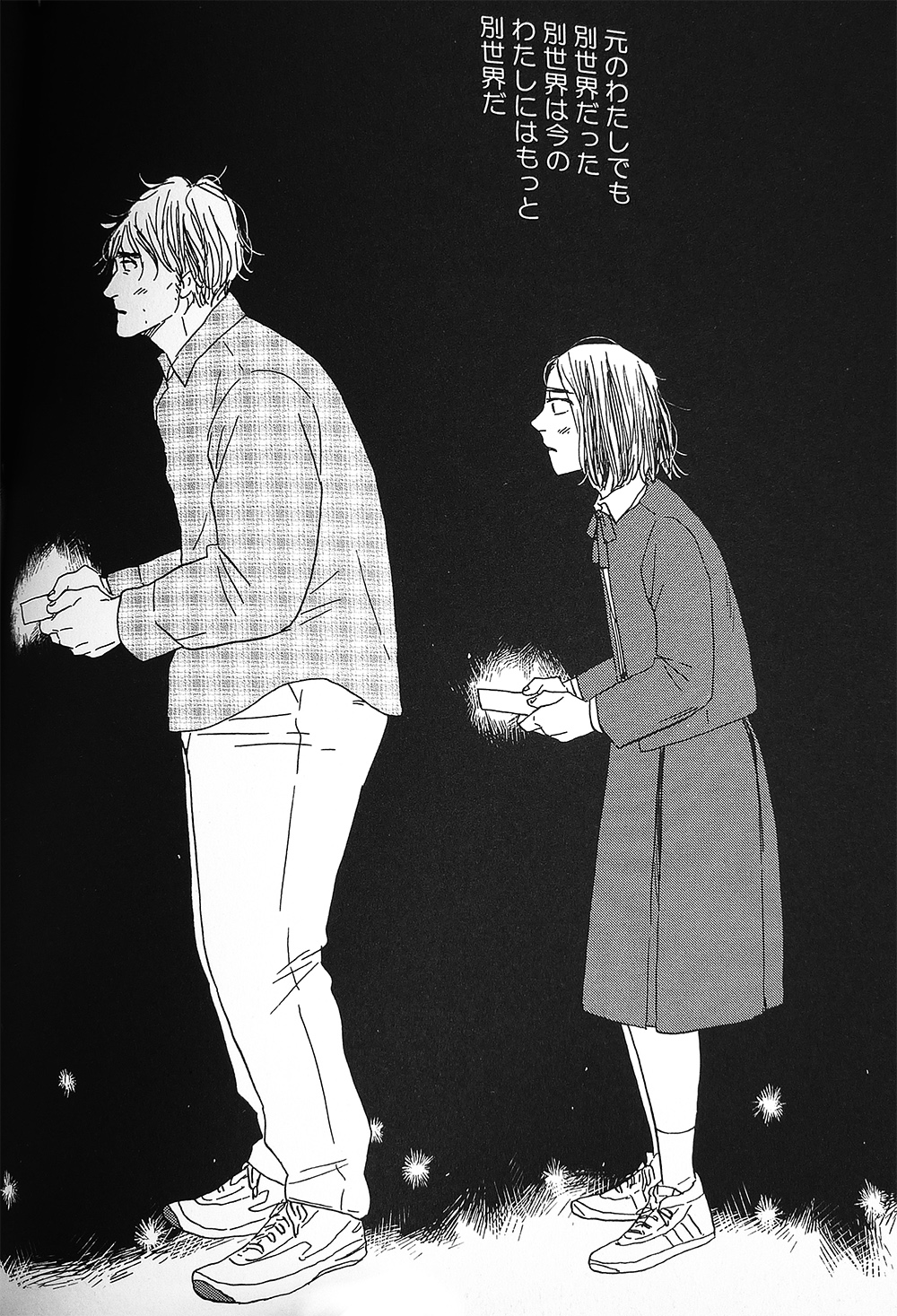 After that introduction, we are propelled forward into a present two years later when both characters have already adapted to their new bodies. We are provided with flashbacks later on in the story and only then we are confronted with body swap clichés of the very physical what-would-I-do-with-myself-if-I-were-a-young-woman (or man, respectively) kind. Yamashita subverts these expectations of the body swap genre even further, as these stereotypical scenes of familiarizing yourself with a body of the previously opposite sex are delivered in a drily comical, detached tone. They are not sexy in any way but depicted rather matter-of-factly, with its characters, especially Hana (now in the body of a 40-year-old man), coming across as clumsy but also resignatedly accepting. Visually, this is supported by Yamashita’s fantastic sensibilities for body postures and facial expressions which form an integral part of the character development and make it possible to tell this story in a subtle way and leave a lot unsaid.
After that introduction, we are propelled forward into a present two years later when both characters have already adapted to their new bodies. We are provided with flashbacks later on in the story and only then we are confronted with body swap clichés of the very physical what-would-I-do-with-myself-if-I-were-a-young-woman (or man, respectively) kind. Yamashita subverts these expectations of the body swap genre even further, as these stereotypical scenes of familiarizing yourself with a body of the previously opposite sex are delivered in a drily comical, detached tone. They are not sexy in any way but depicted rather matter-of-factly, with its characters, especially Hana (now in the body of a 40-year-old man), coming across as clumsy but also resignatedly accepting. Visually, this is supported by Yamashita’s fantastic sensibilities for body postures and facial expressions which form an integral part of the character development and make it possible to tell this story in a subtle way and leave a lot unsaid.
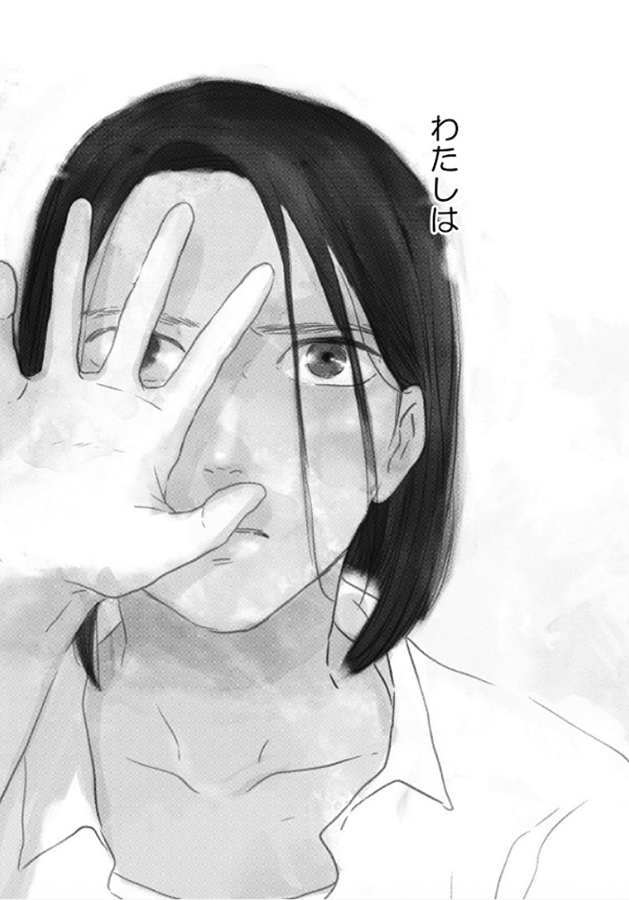 Yamashita’s clean, realistic art which uses lots of white and contrasting black spaces supports the often matter-of-fact tone and the stream of consciousness style monologues which are constantly reflecting on the question of the two protagonists’ completely new identities. That visual style counters the heaviness of the story which often just hints with a few lines at what drives or even torments the two main characters, just like the quiet scenes of everyday life balance out the heavier topics of identity, gender expectations, sex and social life including family. Throughout the manga, Yamashita reuses the imagery of water, the sea, the coastal landscape and the wind – the scenery in which that fateful body switch happened to Hana and Kine. Clean and tidy page layouts during quiet slice-of-life scenes often dissolve to make room for aquatic imagery and a fluid, sketch-like style. The color images for the cover artworks in their very light watercolors and pencil outlines might seem like sketches, too. The cover of the first volume, for example, shows an almost ghostly Hana wearing a semi-transparent dress, showing off her body while we have to acknowledge the fact that we’re unable to truly look inside her, to see the mind inside her body. So we’re left wondering: is it the ‘original’ Hana, or is it Kine’s mind insider her body?
Yamashita’s clean, realistic art which uses lots of white and contrasting black spaces supports the often matter-of-fact tone and the stream of consciousness style monologues which are constantly reflecting on the question of the two protagonists’ completely new identities. That visual style counters the heaviness of the story which often just hints with a few lines at what drives or even torments the two main characters, just like the quiet scenes of everyday life balance out the heavier topics of identity, gender expectations, sex and social life including family. Throughout the manga, Yamashita reuses the imagery of water, the sea, the coastal landscape and the wind – the scenery in which that fateful body switch happened to Hana and Kine. Clean and tidy page layouts during quiet slice-of-life scenes often dissolve to make room for aquatic imagery and a fluid, sketch-like style. The color images for the cover artworks in their very light watercolors and pencil outlines might seem like sketches, too. The cover of the first volume, for example, shows an almost ghostly Hana wearing a semi-transparent dress, showing off her body while we have to acknowledge the fact that we’re unable to truly look inside her, to see the mind inside her body. So we’re left wondering: is it the ‘original’ Hana, or is it Kine’s mind insider her body?
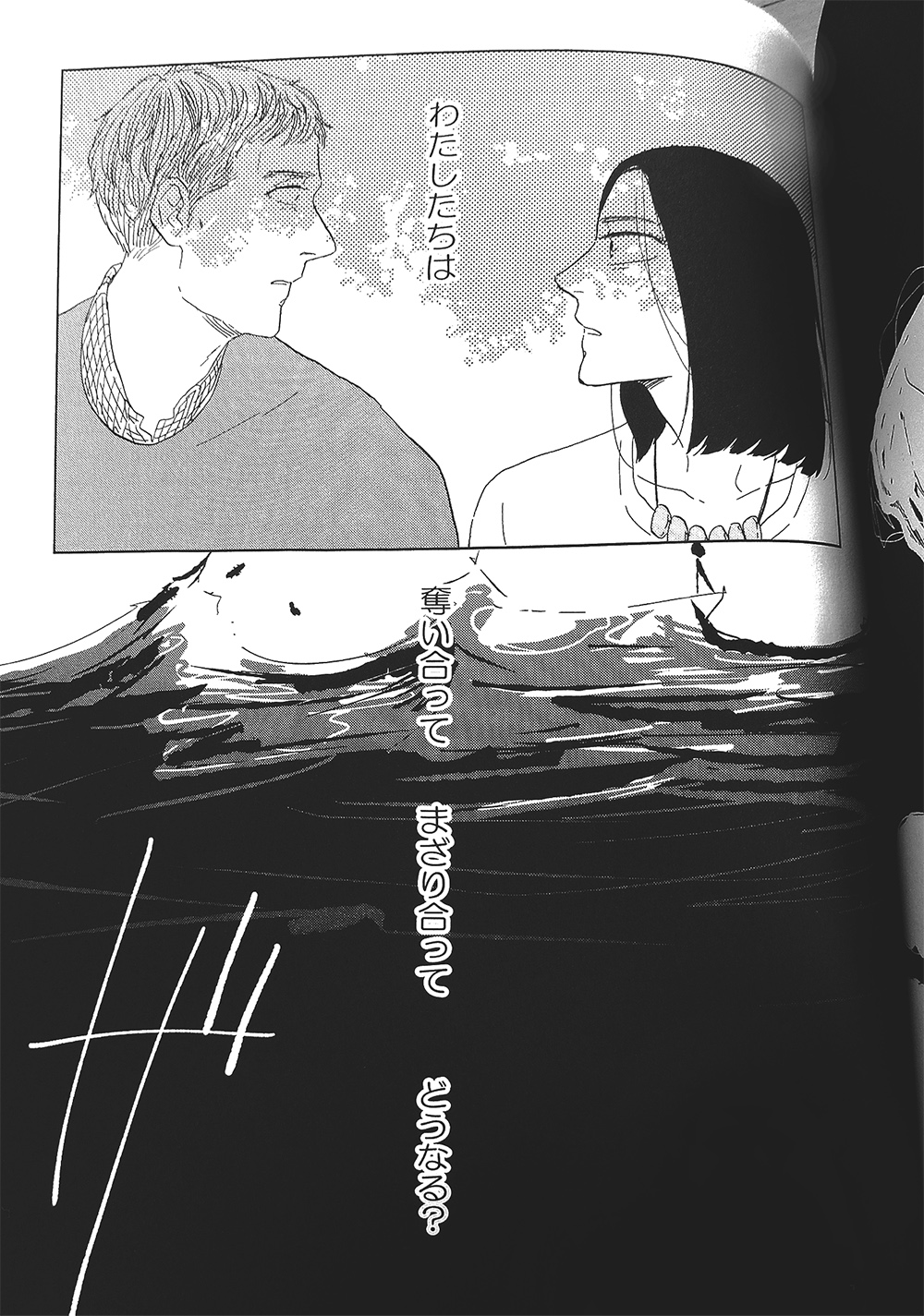 The aquatic imagery is repeatedly used here as a metaphor to express how both protagonists become entangled with each other, physically and mentally. They are on a journey to create meaningful futures for themselves and, given the chance to literally be somebody else, to fulfill their own expectations of what a meaningful life should look like. They are now formed and defined as people both by their previous memories and experiences in their ‘old’ bodies AND the way people react to them now in their ‘new’ bodies, the expectations people have of them now. So their minds are in a sort of middle position were the old and the new, the internal (their own points of view) and the external (the expectations and reactions other people have in relation to them) are starting to become intertwined. After mentally growing into a body of the opposite sex and its specific environment while retaining their original personalities, that specific body and environment has been making them act in certain ways, giving them new possibilities and ambitions, which in turn change them and their personalities. So they have to realize they’re turning into completely new people they wouldn’t have become without that body switch experience. They also have to come to terms with the fact that they will be linked for the rest of their lives and that the process of becoming ‘mixed’, which is constantly alluded to in the internal monologues, is still ongoing, an internal process visually reflected through waves and similar water-related symbols.
The aquatic imagery is repeatedly used here as a metaphor to express how both protagonists become entangled with each other, physically and mentally. They are on a journey to create meaningful futures for themselves and, given the chance to literally be somebody else, to fulfill their own expectations of what a meaningful life should look like. They are now formed and defined as people both by their previous memories and experiences in their ‘old’ bodies AND the way people react to them now in their ‘new’ bodies, the expectations people have of them now. So their minds are in a sort of middle position were the old and the new, the internal (their own points of view) and the external (the expectations and reactions other people have in relation to them) are starting to become intertwined. After mentally growing into a body of the opposite sex and its specific environment while retaining their original personalities, that specific body and environment has been making them act in certain ways, giving them new possibilities and ambitions, which in turn change them and their personalities. So they have to realize they’re turning into completely new people they wouldn’t have become without that body switch experience. They also have to come to terms with the fact that they will be linked for the rest of their lives and that the process of becoming ‘mixed’, which is constantly alluded to in the internal monologues, is still ongoing, an internal process visually reflected through waves and similar water-related symbols.
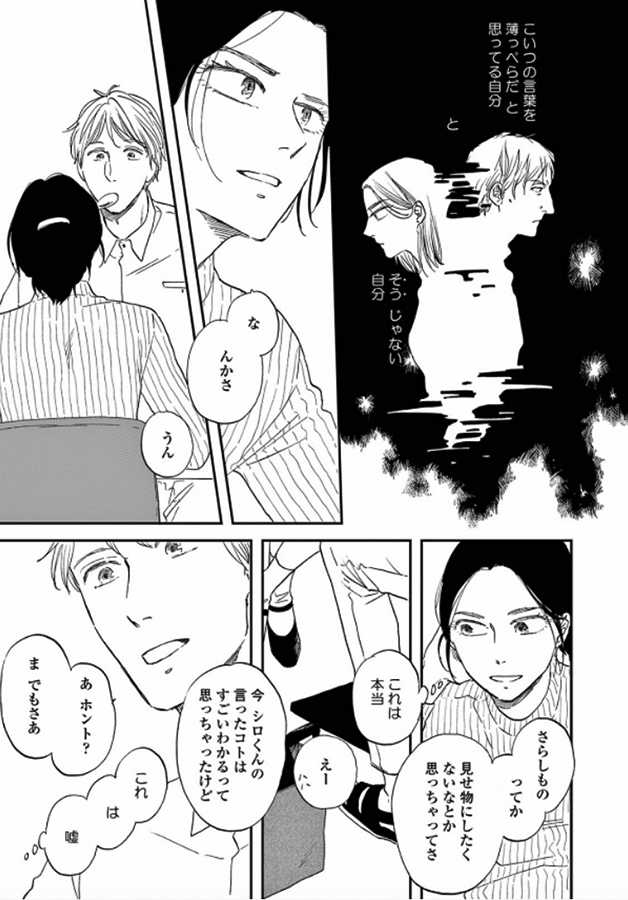 After they meet again, things get even more complicated as they’re now intergral parts of each other’s lives. They are no longer isolated and one person alone, but a pair, two inseparable people forever bound together as at the end of the manga, they’re gearing toward a huge change in Hana’s life which will seal the pair’s fate forever. This gives them the strong advantage of no longer feeling the kind of existential loneliness other ‘normal’ people feel which is ultimately one of those unexpected, eye-opening moments the reader experiences throughout this intriguing story.
After they meet again, things get even more complicated as they’re now intergral parts of each other’s lives. They are no longer isolated and one person alone, but a pair, two inseparable people forever bound together as at the end of the manga, they’re gearing toward a huge change in Hana’s life which will seal the pair’s fate forever. This gives them the strong advantage of no longer feeling the kind of existential loneliness other ‘normal’ people feel which is ultimately one of those unexpected, eye-opening moments the reader experiences throughout this intriguing story.
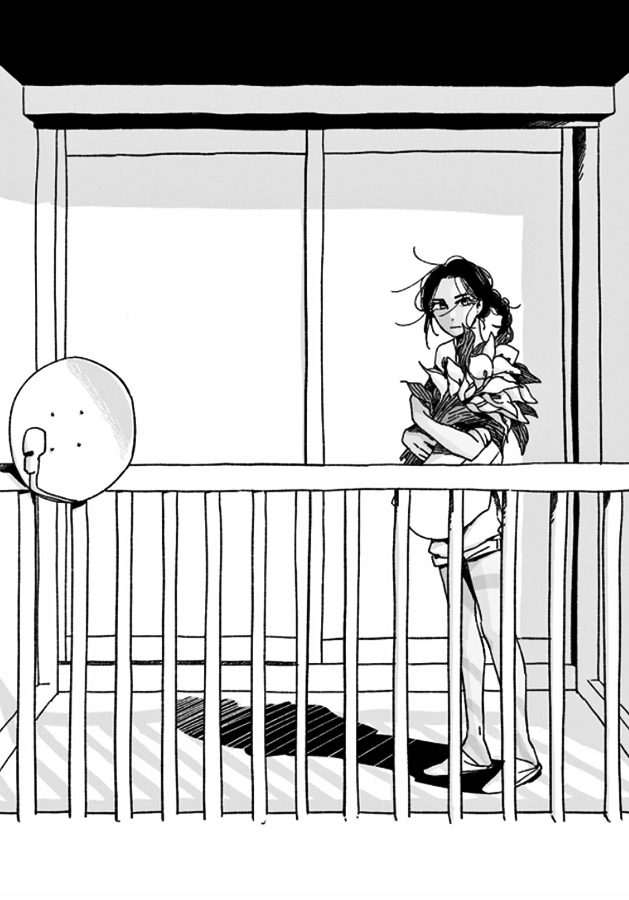 The body swap in WHITE NOTE PAD functions as the starting point of a journey for both the characters and the reader. It is an interesting fantasy grounded in magical realism (with the emphasis on realism) and, after all, an experience only fiction can provide. While the series is pretty short, it is still packed with surprising twists and turns, impressive character development, and thought-provoking gender politics. This being a josei-oriented series aimed at (young) women it is not surprising that there’s not an overwhelming amount of fast-paced action – except maybe toward the end which comes a little abrupt, making it almost difficult to already say goodbye to these two people who, in the course of the story, have so curiously become hard to separate.
The body swap in WHITE NOTE PAD functions as the starting point of a journey for both the characters and the reader. It is an interesting fantasy grounded in magical realism (with the emphasis on realism) and, after all, an experience only fiction can provide. While the series is pretty short, it is still packed with surprising twists and turns, impressive character development, and thought-provoking gender politics. This being a josei-oriented series aimed at (young) women it is not surprising that there’s not an overwhelming amount of fast-paced action – except maybe toward the end which comes a little abrupt, making it almost difficult to already say goodbye to these two people who, in the course of the story, have so curiously become hard to separate.
While the manga is very introspective, emotional and literary (also in the sense that this is a manga that can easily be enjoyed by people who usually read literature only), the conflicts depicted in it are never overdramatized. Through the protagonists’ strong will to make the best of their situations a resolution is always on the horizon as these two characters really try to evolve. So despite the roughness and complexity of the manga’s topics, Yamashita Tomoko provides us here with a warm, positive view of what human beings are capable of which makes WHITE NOTE PAD an absolutely satisfying and even inspiring read.
Title: WHITE NOTE PAD
Author: Yamashita Tomoko (ヤマシタトモコ)
Volumes: 2 (2015-2016; completed)
Magazine: Feel Young
Label: Feel Comics FC SWING
Publisher: Shodensha
Additional information: Preview the first pages of volume 1 here.

 From mid-2015 to late 2016, a strange candy-coloured jewel sparkled brightly in Shueisha’s Gekkan YOU, a monthly josei manga magazine which has a target demographic from youngish female office workers to women in their 50s who all have been reading shoujo manga for a long time, and which usually offers a line-up of mostly romance, comedy and slice of life josei manga by shoujo manga veterans. Yet sometimes it is in the most unexpected places you can find the most unusual, charming little gems, in this case a short series called Kokage-kun wa Majo (subtitled Kokage-kun Bewitched, but more literally translated Kokage-kun is a Witch), published separately in 3 comic volumes.
From mid-2015 to late 2016, a strange candy-coloured jewel sparkled brightly in Shueisha’s Gekkan YOU, a monthly josei manga magazine which has a target demographic from youngish female office workers to women in their 50s who all have been reading shoujo manga for a long time, and which usually offers a line-up of mostly romance, comedy and slice of life josei manga by shoujo manga veterans. Yet sometimes it is in the most unexpected places you can find the most unusual, charming little gems, in this case a short series called Kokage-kun wa Majo (subtitled Kokage-kun Bewitched, but more literally translated Kokage-kun is a Witch), published separately in 3 comic volumes. Its young artist, Komori YÅko, is a very recent graduate of Bunsei University of Art and neither a former Betsuma author now graduated to YOU nor a veteran like Hagio Moto, who are all more typical for the latter magazine’s roster. But Komori’s unique art style and inventive story-telling definitely deserve a closer look if you’re interested in exciting new talents. She only has two previous 2-volume series under her belt, one astronomically themed, the other one taking place in a maritime setting, which were also serialized in YOU. In these two works, she has already been able to impress readers with her quiet but entrancing stories and her stunning yet clean art relying heavily on natural motifs. Here, in Kokage-kun wa Majo it’s the plants-growing-out-of-cute-boys-and-girls, slightly pagan aesthetics so popular among professional and amateur artists right now which are combined with pastel secondary colors, playful gothic lolita accessories and fairy tale elements in a suburban and later on more fantastic setting providing a backdrop for a surprisingly dark love story.
Its young artist, Komori YÅko, is a very recent graduate of Bunsei University of Art and neither a former Betsuma author now graduated to YOU nor a veteran like Hagio Moto, who are all more typical for the latter magazine’s roster. But Komori’s unique art style and inventive story-telling definitely deserve a closer look if you’re interested in exciting new talents. She only has two previous 2-volume series under her belt, one astronomically themed, the other one taking place in a maritime setting, which were also serialized in YOU. In these two works, she has already been able to impress readers with her quiet but entrancing stories and her stunning yet clean art relying heavily on natural motifs. Here, in Kokage-kun wa Majo it’s the plants-growing-out-of-cute-boys-and-girls, slightly pagan aesthetics so popular among professional and amateur artists right now which are combined with pastel secondary colors, playful gothic lolita accessories and fairy tale elements in a suburban and later on more fantastic setting providing a backdrop for a surprisingly dark love story.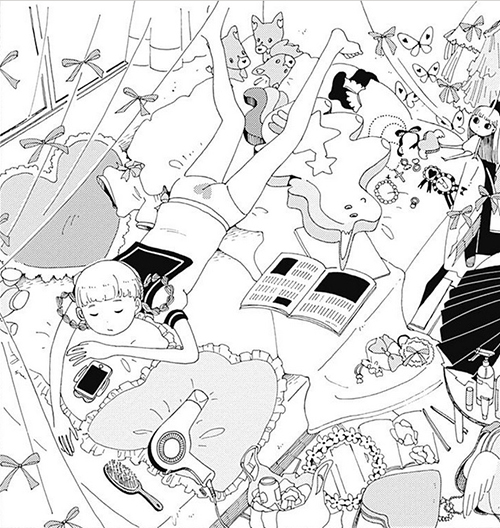 Yumeko, our female protagonist, is a cute but lazy and self-indulgent girl who likes rolling around on the floor of her room in just a pair of panties and her school uniform top. Together with her mother, she lives in a decrepit community apartment building, a fact she’s been trying to hide from the girls in her class – and often from herself as she dreams herself away, imagining herself to be a princess swimming in cute clothes, candy and cakes. (We’re back to an old danchi as the childhood home of a shoujo manga heroine here; see Yamakawa Aiji’s previously reviewed
Yumeko, our female protagonist, is a cute but lazy and self-indulgent girl who likes rolling around on the floor of her room in just a pair of panties and her school uniform top. Together with her mother, she lives in a decrepit community apartment building, a fact she’s been trying to hide from the girls in her class – and often from herself as she dreams herself away, imagining herself to be a princess swimming in cute clothes, candy and cakes. (We’re back to an old danchi as the childhood home of a shoujo manga heroine here; see Yamakawa Aiji’s previously reviewed 
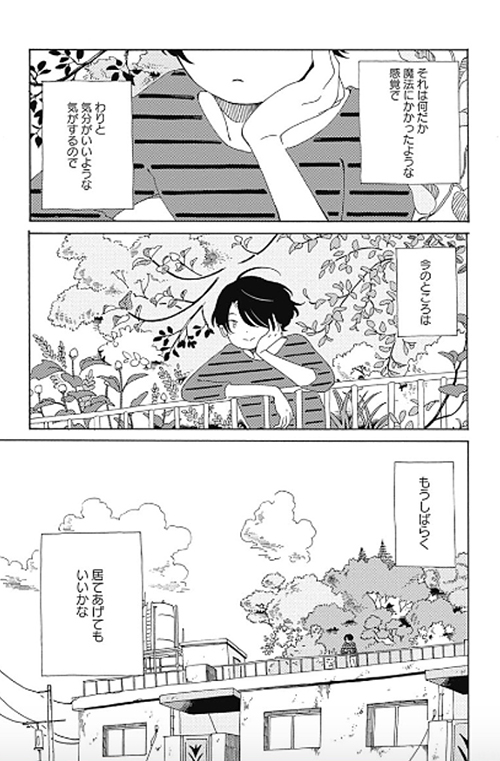
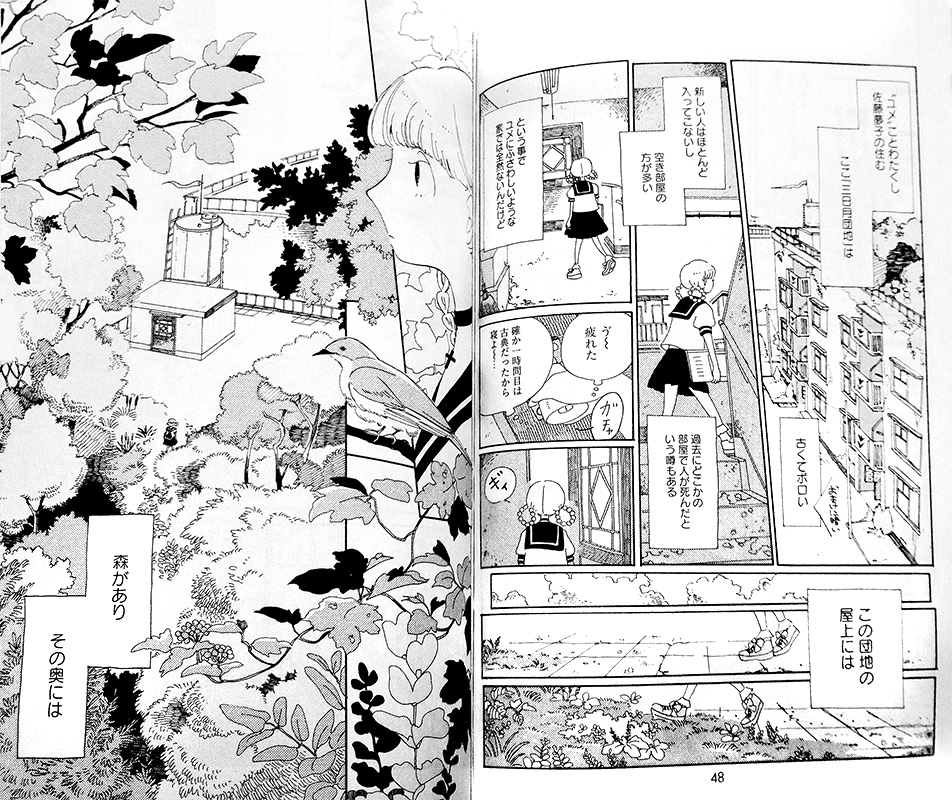
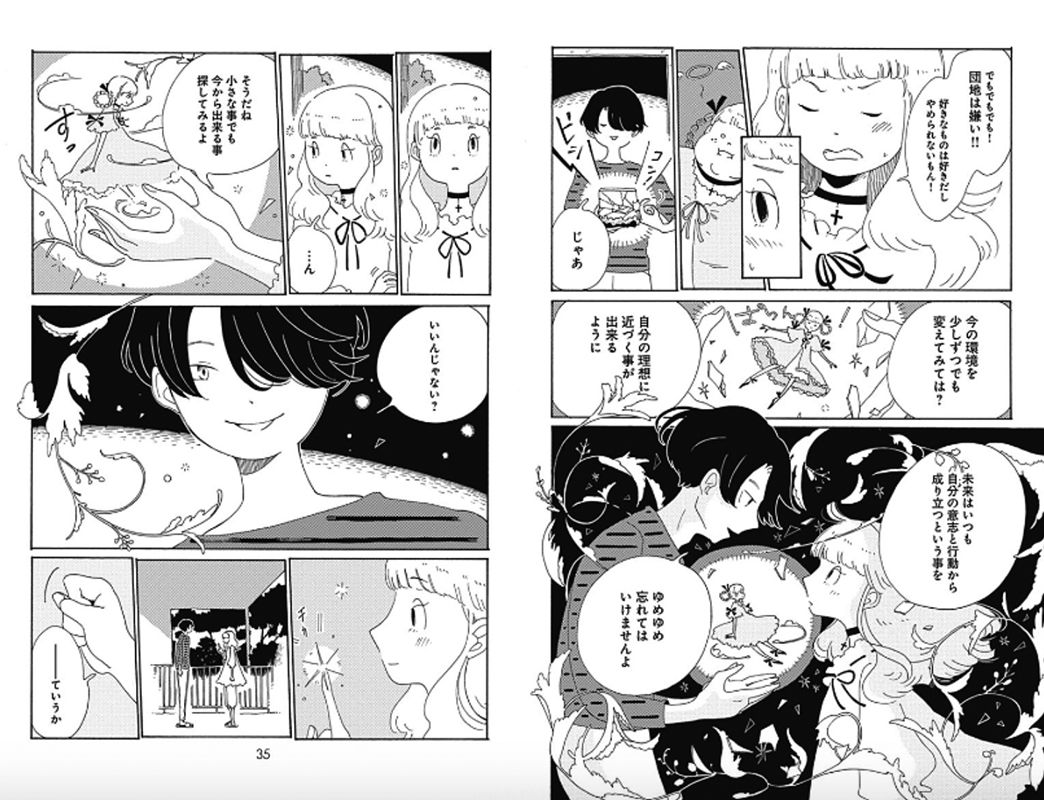
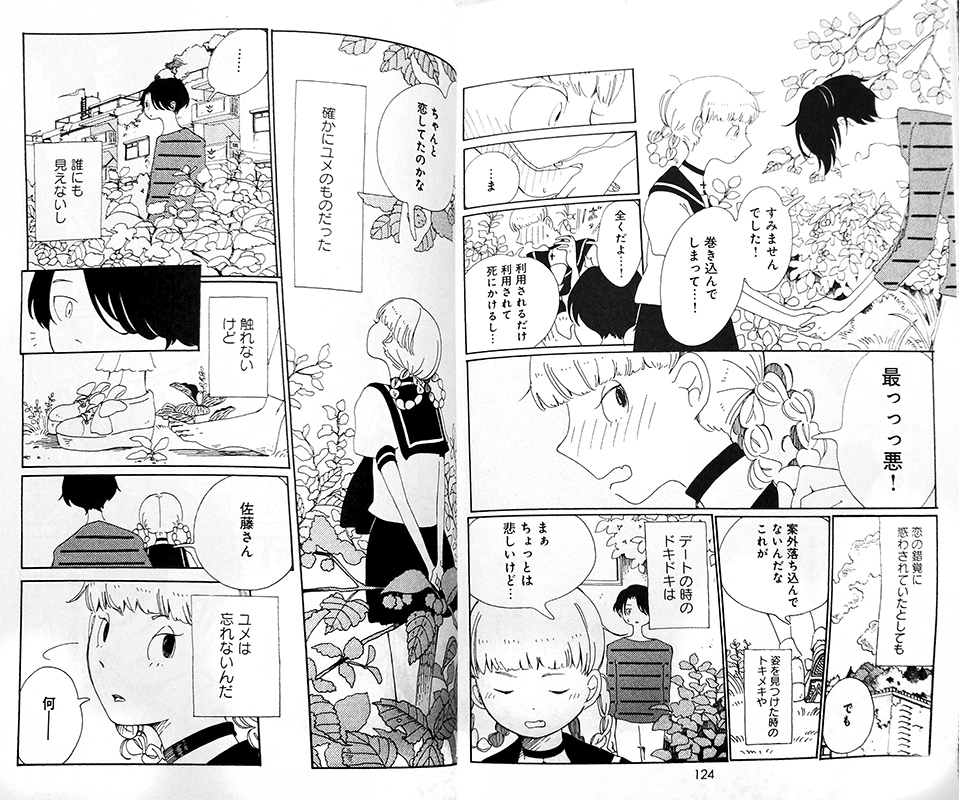
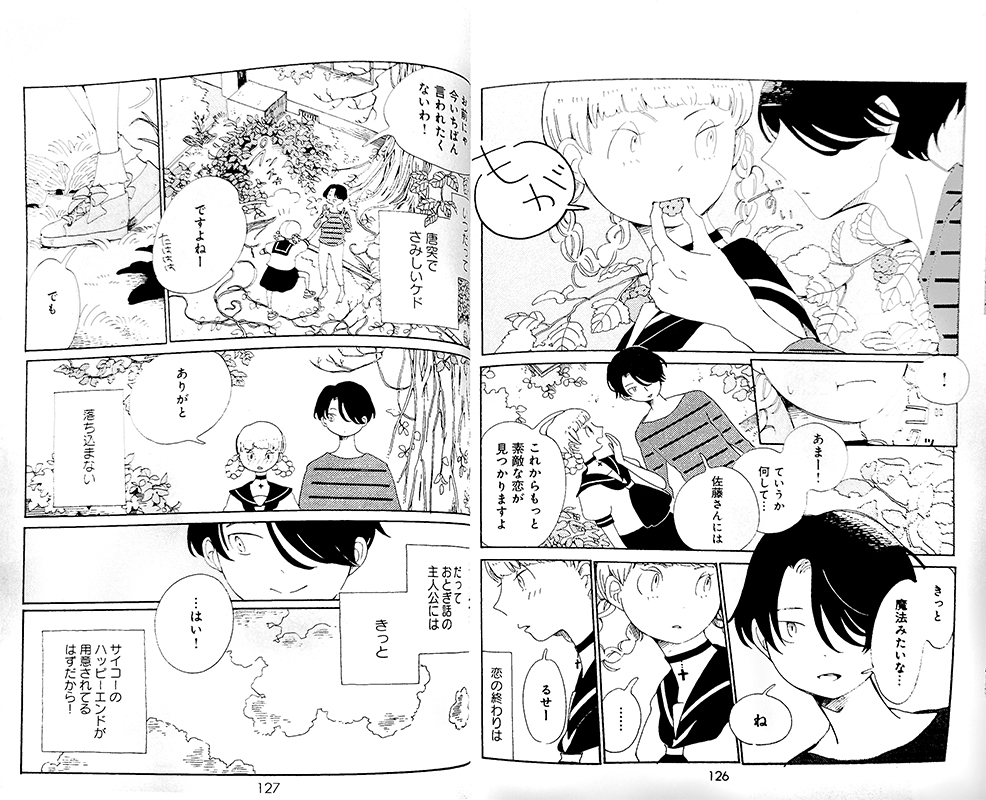
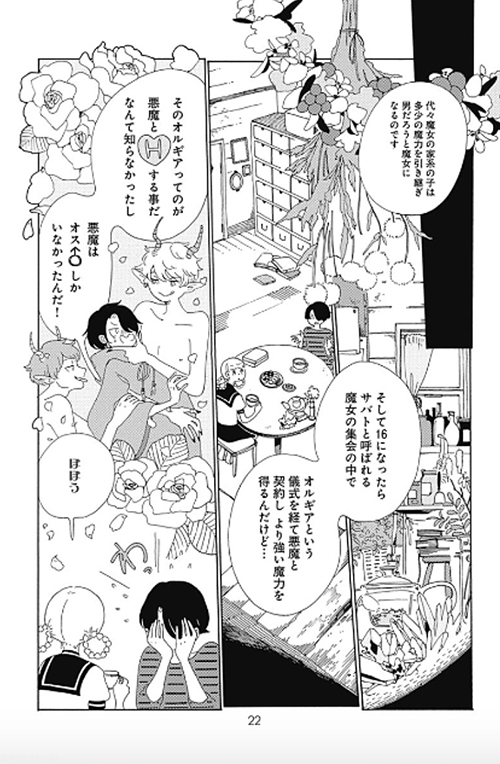 Kokage-kun was supposed to take part in an “orgia†with a demon (akuma) to gain his full magical powers. He didn’t want to, though – for hidden reasons closely connected to Yumeko. The demon, however, never accepted Kokage-kun’s rejection and can’t let go of his desire for the witch boy and his right to an orgy with him. (And yes, that orgy is exactly what it sounds like ;) His plan is to get closer to Kokage-kun by using Yumeko who is flattered by the sudden attention of the demon in the disguise of a rather good-looking schoolboy. Of course, Yumeko is doomed to get hurt once she finds out the demon’s true intentions and is shocked when she hears about that orgia business.
Kokage-kun was supposed to take part in an “orgia†with a demon (akuma) to gain his full magical powers. He didn’t want to, though – for hidden reasons closely connected to Yumeko. The demon, however, never accepted Kokage-kun’s rejection and can’t let go of his desire for the witch boy and his right to an orgy with him. (And yes, that orgy is exactly what it sounds like ;) His plan is to get closer to Kokage-kun by using Yumeko who is flattered by the sudden attention of the demon in the disguise of a rather good-looking schoolboy. Of course, Yumeko is doomed to get hurt once she finds out the demon’s true intentions and is shocked when she hears about that orgia business.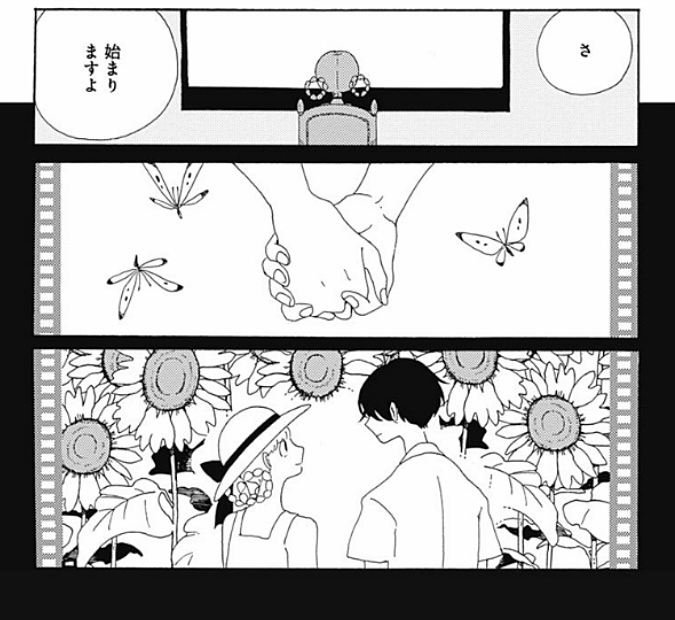 Things get even more complicated when Yumeko realizes that her own feelings for the witch boy are slowly changing when her best friend Nanao falls in love with him. But there is a mysterious strong bond between Yumeko and Kokage: they seem to have a shared past Yumeko doesn’t remember, the proof being a photograph she finds of her and him smiling happily in a field of sunflowers… This is just the beginning of Yumeko’s and Kokage-kun’s dangerous journey to the bottom of darkness which is lightened up by hope, friendship and wonders, more witches, demons and a puppet master, a journey to recover Yumeko’s lost memories of a forgotten love – and to overcome death.
Things get even more complicated when Yumeko realizes that her own feelings for the witch boy are slowly changing when her best friend Nanao falls in love with him. But there is a mysterious strong bond between Yumeko and Kokage: they seem to have a shared past Yumeko doesn’t remember, the proof being a photograph she finds of her and him smiling happily in a field of sunflowers… This is just the beginning of Yumeko’s and Kokage-kun’s dangerous journey to the bottom of darkness which is lightened up by hope, friendship and wonders, more witches, demons and a puppet master, a journey to recover Yumeko’s lost memories of a forgotten love – and to overcome death. Like mentioned in the beginning, Komori YÅko’s artwork is absolutely delightful! From the beautiful color illustrations for the book covers, sweetly pastel-hued like Yumeko’s beloved candy, to the retro but sparkle-free character designs, which convey emotions expertly through lively facial expressions, to the atmospheric settings – there’s just so much that pleases the eye without ever being overwhelming. The page designs throughout are mostly clean, with the action often put into tidy panels, but also feature pretty details and natural ornaments, like insects, flowers, or even leaves growing out of bodies. But the pages never appear overwrought or overloaded, just as the story is not convoluted but – despite its growing complexity – easy to follow throughout the three volumes. And what is important to stress is that the art of a wildly growing nature is not just a visual gimmick here, as the life force of nature is crucial to the bitter but ultimately sweet story. Komori is also a master of creating memorable scenes just by putting her whimsical characters, fully fleshed out with their own weaknesses and quirky habits, into charming sceneries and settings: the run-down yet retro-cute community housing complex, a haunted forest, a day at the beach that envelopes the reader in its atmosphere so successfully you’ll find yourself able to smell the salty air and hear the cries of the seagulls!
Like mentioned in the beginning, Komori YÅko’s artwork is absolutely delightful! From the beautiful color illustrations for the book covers, sweetly pastel-hued like Yumeko’s beloved candy, to the retro but sparkle-free character designs, which convey emotions expertly through lively facial expressions, to the atmospheric settings – there’s just so much that pleases the eye without ever being overwhelming. The page designs throughout are mostly clean, with the action often put into tidy panels, but also feature pretty details and natural ornaments, like insects, flowers, or even leaves growing out of bodies. But the pages never appear overwrought or overloaded, just as the story is not convoluted but – despite its growing complexity – easy to follow throughout the three volumes. And what is important to stress is that the art of a wildly growing nature is not just a visual gimmick here, as the life force of nature is crucial to the bitter but ultimately sweet story. Komori is also a master of creating memorable scenes just by putting her whimsical characters, fully fleshed out with their own weaknesses and quirky habits, into charming sceneries and settings: the run-down yet retro-cute community housing complex, a haunted forest, a day at the beach that envelopes the reader in its atmosphere so successfully you’ll find yourself able to smell the salty air and hear the cries of the seagulls!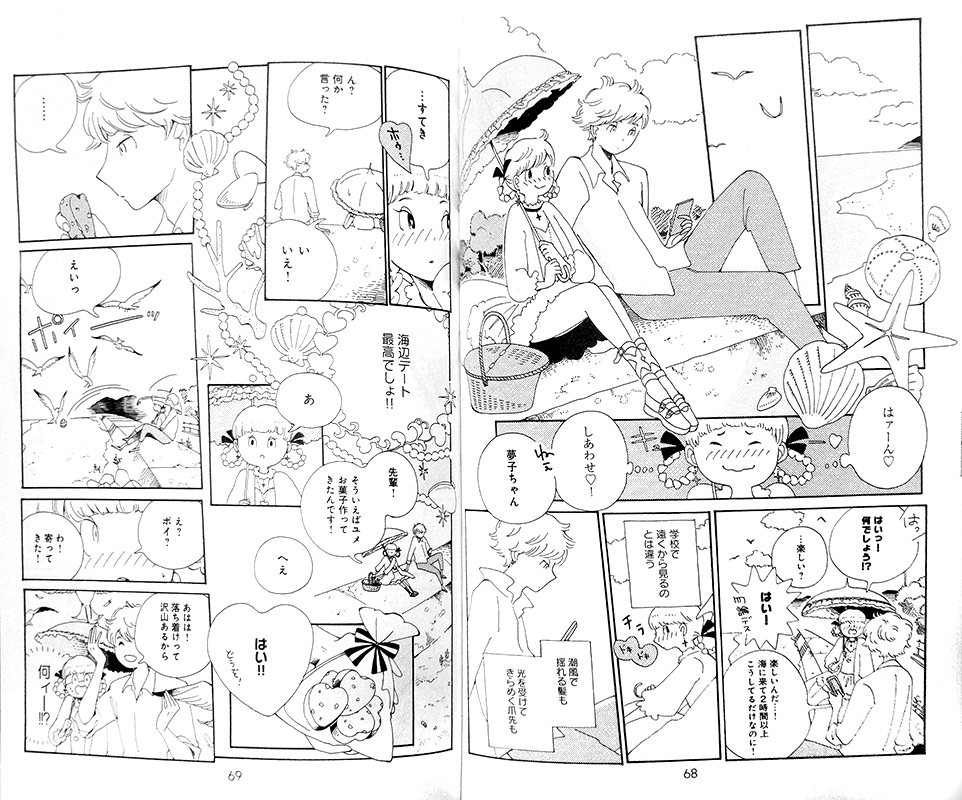
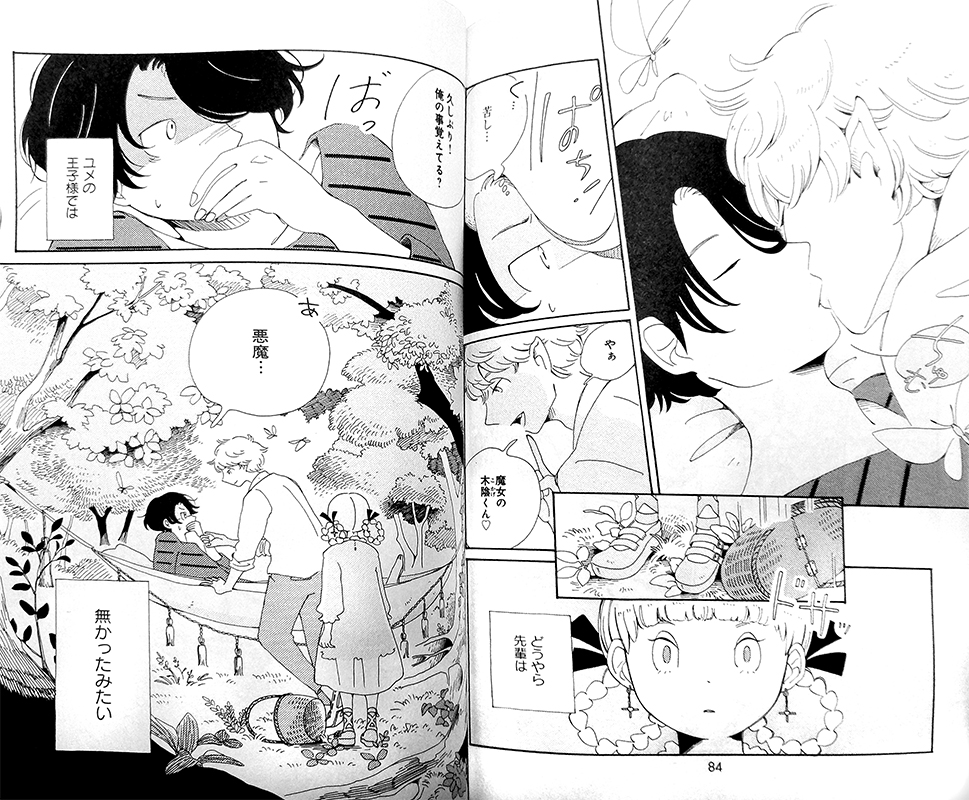
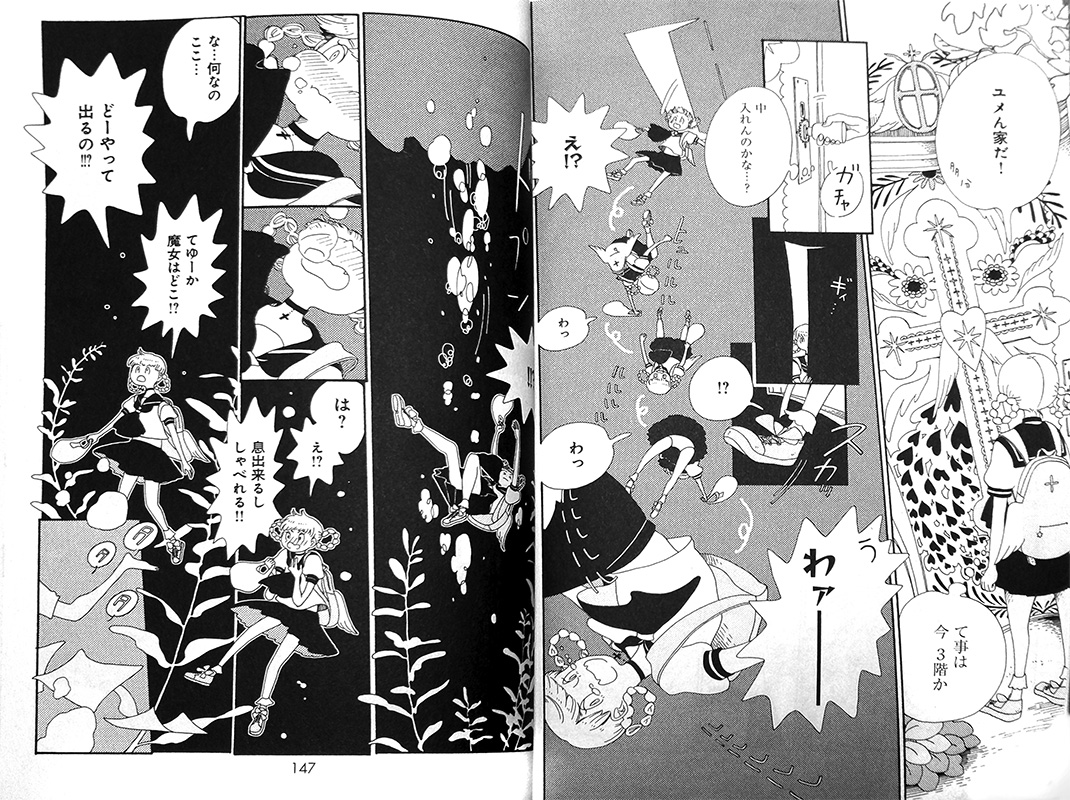
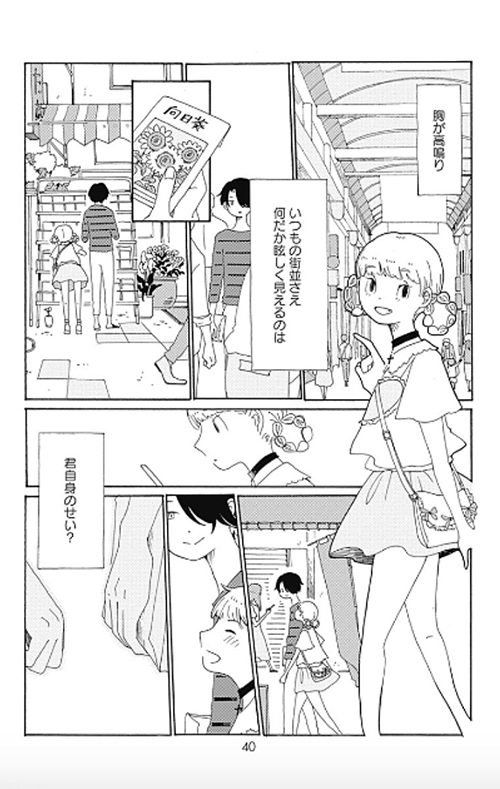 Komori YÅko is not just a wizard of ink and colours: her series is brimming with small inventive ideas which are delivered both through the art and the story itself. Her talent for plotting and story-telling is just as outstanding as her art, as she presents us with a narrative full of twists and turns. Our starting point is witnessing the antics of our lazy heroine, her hilarious lack of self-discipline and her little quarrels with the witch boy, the tone being light and fun with a slight hint of melancholia. As the story unravels it turns surprisingly complex and deeply emotional, combining elements of comedy, fantasy, romance, adventure and even boys’ love. It sometimes even ventures into the surreal which again provides the reader with some unusual art to go along with it.
Komori YÅko is not just a wizard of ink and colours: her series is brimming with small inventive ideas which are delivered both through the art and the story itself. Her talent for plotting and story-telling is just as outstanding as her art, as she presents us with a narrative full of twists and turns. Our starting point is witnessing the antics of our lazy heroine, her hilarious lack of self-discipline and her little quarrels with the witch boy, the tone being light and fun with a slight hint of melancholia. As the story unravels it turns surprisingly complex and deeply emotional, combining elements of comedy, fantasy, romance, adventure and even boys’ love. It sometimes even ventures into the surreal which again provides the reader with some unusual art to go along with it.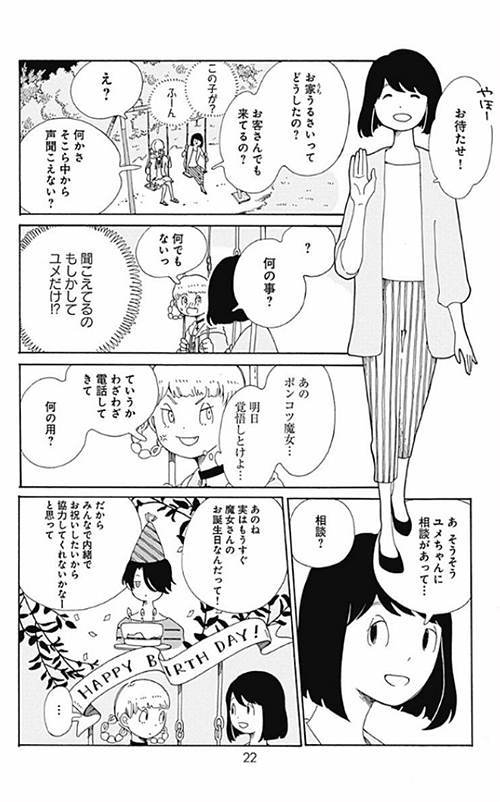 The cast is growing too as Yumeko and Kokage later on are joined by more and more magical companions. And it’s the deepening bonds with Yumeko’s friend from school, Nanao, and another witch girl called Moe that are really nice to watch, as this manga is not just a fantasy romance manga but also depicts friendships among girls in a realistic, multi-layered way. However, the heart of the manga remains Yumeko’s and Kokage-kun’s dangerous journey, as the question of whether the two will be able to save their future together is what will keep readers devouring the pages, desperately hoping for a happy end…
The cast is growing too as Yumeko and Kokage later on are joined by more and more magical companions. And it’s the deepening bonds with Yumeko’s friend from school, Nanao, and another witch girl called Moe that are really nice to watch, as this manga is not just a fantasy romance manga but also depicts friendships among girls in a realistic, multi-layered way. However, the heart of the manga remains Yumeko’s and Kokage-kun’s dangerous journey, as the question of whether the two will be able to save their future together is what will keep readers devouring the pages, desperately hoping for a happy end…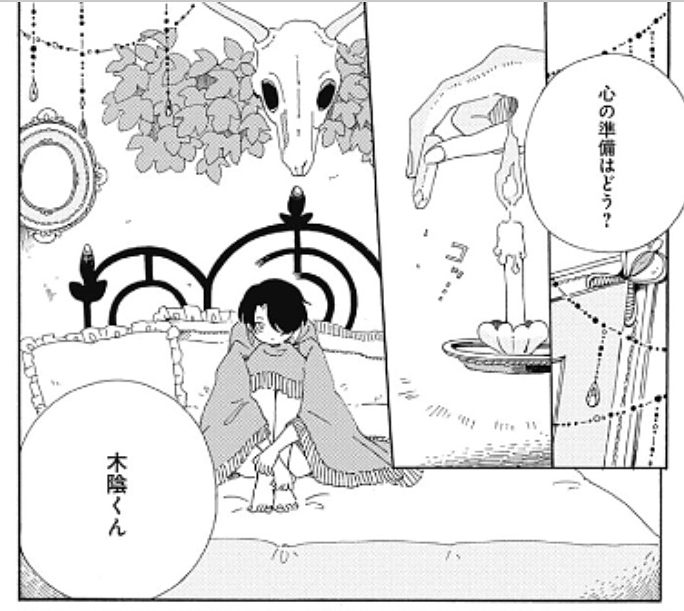 It’s been a while since Kokage-kun wa Majo ended its run and there has been no word on a new work by Komori YÅko, neither short nor long. But now that the artist has finished her art school education, we have to keep our fingers crossed she’ll be able to continue her career as a manga artist and find a lot of support in the future as both her quirky art and story-telling abilities truly stand out in the often rather homogenous sea of mainstream shoujo/josei manga.
It’s been a while since Kokage-kun wa Majo ended its run and there has been no word on a new work by Komori YÅko, neither short nor long. But now that the artist has finished her art school education, we have to keep our fingers crossed she’ll be able to continue her career as a manga artist and find a lot of support in the future as both her quirky art and story-telling abilities truly stand out in the often rather homogenous sea of mainstream shoujo/josei manga.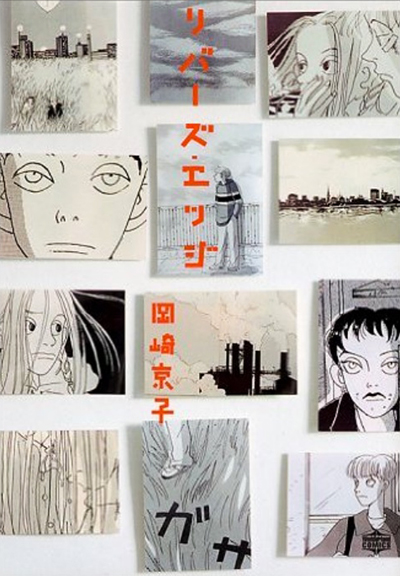 The most exciting news of the past few days to me came in the form of the announcement of a movie adaption of Okazaki KyÅko’s iconic manga River’s Edge. Principal photography is already being done while the movie is scheduler for a 2018 release in Japanese theaters. Okazaki started her work as a professional mangaka in the early 1980s, releasing mostly short stories and one-volume series both in manga magazine but also sub-culture and fashion magazines. Her extremely productive career – which earned her a cult following among readers and critics alike – was brought to a sudden tragic halt when she was hit by an SUV in 1996. To this day, she hasn’t been physically able to publish a new manga. She is thoroughly missed by her fans and throughout the years has influenced and inspired a lot of creative and intellectual people, among them artists, musicians, film directors, as well as cultural critics and scholars.
The most exciting news of the past few days to me came in the form of the announcement of a movie adaption of Okazaki KyÅko’s iconic manga River’s Edge. Principal photography is already being done while the movie is scheduler for a 2018 release in Japanese theaters. Okazaki started her work as a professional mangaka in the early 1980s, releasing mostly short stories and one-volume series both in manga magazine but also sub-culture and fashion magazines. Her extremely productive career – which earned her a cult following among readers and critics alike – was brought to a sudden tragic halt when she was hit by an SUV in 1996. To this day, she hasn’t been physically able to publish a new manga. She is thoroughly missed by her fans and throughout the years has influenced and inspired a lot of creative and intellectual people, among them artists, musicians, film directors, as well as cultural critics and scholars.